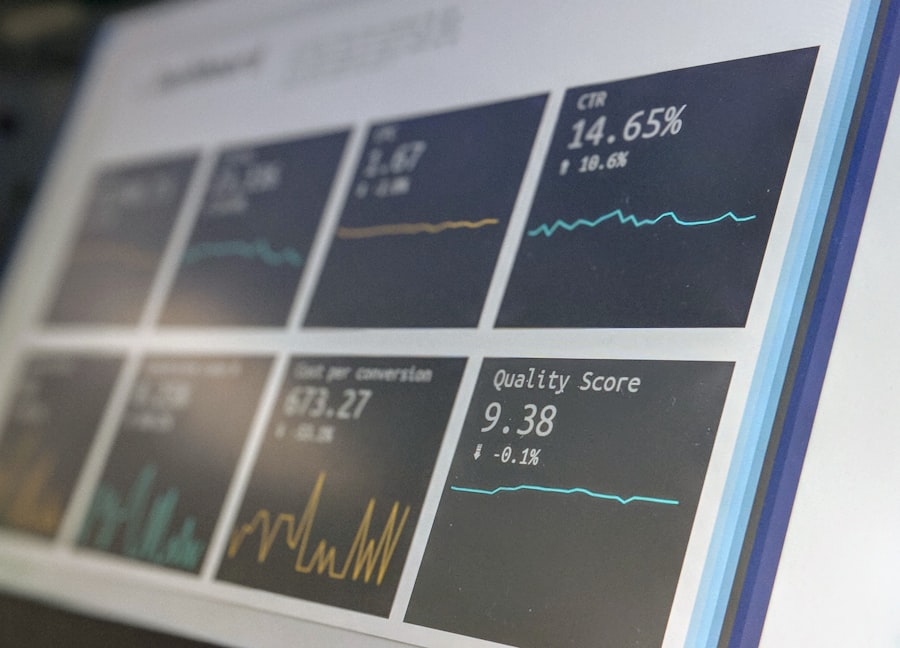Search Engine Marketing (SEM) is a digital marketing strategy that involves promoting websites by increasing their visibility in search engine results pages (SERPs) primarily through paid advertising. Unlike Search Engine Optimization (SEO), which focuses on organic search results, SEM encompasses a broader range of tactics, including pay-per-click (PPC) advertising, display ads, and remarketing. The importance of SEM lies in its ability to drive targeted traffic to a website, enhance brand visibility, and ultimately increase conversions.
In an era where consumers increasingly rely on search engines to find products and services, businesses that leverage SEM can gain a competitive edge. The significance of SEM is underscored by the sheer volume of searches conducted daily. According to recent statistics, Google processes over 3.5 billion searches each day, making it the most widely used search engine globally.
This immense traffic presents a golden opportunity for businesses to capture potential customers at the moment they express intent. By strategically placing ads in front of users actively searching for relevant keywords, companies can not only boost their visibility but also improve their chances of converting clicks into sales. Furthermore, SEM allows for precise targeting based on various factors such as location, demographics, and user behavior, ensuring that marketing efforts reach the right audience at the right time.
Key Takeaways
- SEM is crucial for increasing online visibility and driving targeted traffic to your website.
- Effective keyword research and selection are foundational for successful SEM campaigns.
- Crafting compelling ad copy and using ad extensions enhance ad performance and click-through rates.
- Targeted landing pages and mobile optimization improve user experience and conversion rates.
- Continuous monitoring, analysis, and integration with other marketing strategies maximize SEM effectiveness.
Keyword Research and Selection
Keyword research is the cornerstone of any successful SEM campaign. It involves identifying the terms and phrases that potential customers use when searching for products or services related to a business. Effective keyword research goes beyond simply selecting high-volume keywords; it requires a deep understanding of user intent and the competitive landscape.
Tools such as Google Keyword Planner, SEMrush, and Ahrefs can provide valuable insights into search volume, competition level, and related keywords, enabling marketers to make informed decisions. When selecting keywords, it is crucial to consider both short-tail and long-tail keywords. Short-tail keywords are typically one or two words long and have high search volumes but also face intense competition.
For instance, a keyword like “shoes” may attract a vast audience but is unlikely to convert well due to its broad nature. In contrast, long-tail keywords are more specific phrases that often indicate a higher intent to purchase. An example would be “women’s running shoes for flat feet,” which targets a niche audience and is more likely to result in conversions.
By balancing short-tail and long-tail keywords in their campaigns, marketers can optimize their reach while also catering to users with varying levels of intent.
Creating Compelling Ad Copy

Crafting compelling ad copy is essential for capturing the attention of potential customers in a crowded digital landscape. The ad copy must not only be engaging but also clearly communicate the value proposition of the product or service being offered. A well-written ad should include relevant keywords to improve Quality Score—a metric used by search engines to determine the relevance and quality of ads—which can lead to lower costs per click and better ad placements.
To create effective ad copy, marketers should focus on several key elements: clarity, urgency, and a strong call-to-action (CTA). Clarity ensures that the message is easily understood; using simple language and avoiding jargon can help achieve this goal. Urgency can be instilled through phrases like “limited time offer” or “act now,” encouraging users to take immediate action.
A strong CTA directs users on what to do next, whether it’s “Shop Now,” “Get a Free Quote,” or “Sign Up Today.” Additionally, incorporating unique selling points (USPs) such as free shipping, discounts, or exclusive offers can further entice users to click on the ad.
Utilizing Ad Extensions
| Ad Extension Type | Purpose | Average CTR Increase | Best Use Case | Example Metrics |
|---|---|---|---|---|
| Sitelink Extensions | Provide additional links to specific pages | 10-20% | Highlight multiple product categories or services | CTR: 12%, Conversion Rate: 5% |
| Call Extensions | Allow users to call directly from the ad | 8-15% | Local businesses or service providers | Call Rate: 7%, Call Duration Avg: 3 min |
| Location Extensions | Show business address and map | 5-10% | Brick-and-mortar stores | Store Visits: 4%, CTR: 6% |
| Callout Extensions | Highlight unique selling points | 5-10% | Emphasize free shipping, 24/7 support, etc. | CTR: 7%, Engagement Rate: 4% |
| Structured Snippet Extensions | Show specific aspects of products/services | 4-8% | List brands, styles, or amenities | CTR: 6%, Conversion Rate: 3% |
| Price Extensions | Display pricing information | 6-12% | Promote special offers or pricing tiers | CTR: 9%, Conversion Rate: 6% |
Ad extensions are additional pieces of information that can be added to search ads to provide users with more context about a business. These extensions enhance the visibility and effectiveness of ads by offering extra details that can influence a user’s decision-making process. Common types of ad extensions include site link extensions, call extensions, location extensions, and review extensions.
Each type serves a specific purpose and can significantly improve click-through rates (CTR) when used effectively. For instance, site link extensions allow advertisers to include multiple links within a single ad, directing users to specific pages on their website such as product categories or promotional offers. This not only provides users with more options but also increases the likelihood of clicks by guiding them to relevant content.
Call extensions enable users to call a business directly from the ad with just one tap, which is particularly beneficial for mobile users seeking immediate assistance or information. By leveraging these extensions strategically, businesses can enhance their ads’ performance and provide a richer user experience.
Implementing Targeted Landing Pages
The effectiveness of an SEM campaign is heavily influenced by the quality of its landing pages. A targeted landing page is designed specifically for a particular ad or keyword group, ensuring that users who click on an ad are directed to content that aligns with their search intent. This alignment is crucial for maximizing conversion rates; if users land on a page that does not meet their expectations or needs, they are likely to bounce away quickly.
To create effective landing pages, marketers should focus on several key elements: relevance, design, and user experience. The content on the landing page should directly reflect the ad copy and keywords used in the campaign, reinforcing the message and providing users with what they were promised in the ad. Additionally, the design should be visually appealing and easy to navigate; using clear headings, bullet points, and images can help break up text and make information more digestible.
Finally, optimizing for user experience involves ensuring fast loading times and mobile responsiveness, as these factors significantly impact user satisfaction and conversion rates.
Monitoring and Analyzing Campaign Performance

Monitoring and analyzing campaign performance is vital for understanding how well an SEM strategy is working and where improvements can be made. Key performance indicators (KPIs) such as click-through rate (CTR), conversion rate, cost per acquisition (CPA), and return on ad spend (ROAS) provide valuable insights into the effectiveness of ads and overall campaign performance. By regularly reviewing these metrics, marketers can identify trends, assess the impact of changes made to campaigns, and make data-driven decisions.
Tools like Google Analytics and Google Ads provide comprehensive reporting features that allow marketers to track user behavior after clicking on an ad. For example, analyzing bounce rates can reveal whether users are finding what they expected upon landing on a page; high bounce rates may indicate that the landing page needs optimization or that the ad copy was misleading. Additionally, A/B testing different ad variations can help determine which elements resonate best with the target audience, enabling continuous improvement of campaigns over time.
Optimizing for Mobile Devices
With an increasing number of consumers using mobile devices for online searches, optimizing SEM campaigns for mobile is no longer optional; it’s essential. Mobile optimization involves ensuring that ads are tailored for mobile users and that landing pages are responsive and user-friendly on smaller screens. According to recent studies, mobile devices account for over half of all web traffic globally, highlighting the importance of catering to this audience segment.
To optimize for mobile devices effectively, marketers should consider several strategies. First, creating mobile-specific ad copy that speaks directly to mobile users can enhance engagement; this might include shorter headlines or CTAs that are easy to tap on a touchscreen. Additionally, ensuring that landing pages load quickly on mobile devices is critical; slow-loading pages can lead to high bounce rates and lost opportunities.
Implementing responsive design techniques ensures that content displays correctly across various screen sizes while maintaining usability.
Integrating SEM with Other Marketing Strategies
Integrating SEM with other marketing strategies creates a cohesive approach that maximizes overall marketing effectiveness. By aligning SEM efforts with social media marketing, content marketing, email marketing, and SEO initiatives, businesses can create a unified brand message that resonates across multiple channels. This integration not only enhances visibility but also reinforces brand recognition among consumers.
For example, insights gained from SEM campaigns can inform content marketing strategies by identifying popular keywords and topics that resonate with target audiences. Similarly, retargeting ads based on user interactions with email campaigns can help re-engage potential customers who may have shown interest but did not convert initially. By leveraging data from various marketing channels, businesses can create more personalized experiences for users while optimizing their marketing budgets effectively.
In conclusion, Search Engine Marketing is a multifaceted approach that requires careful planning and execution across various components—from keyword research to ad copy creation and performance analysis. By understanding its importance and implementing best practices in each area, businesses can harness the power of SEM to drive targeted traffic, enhance brand visibility, and achieve their marketing goals effectively.




